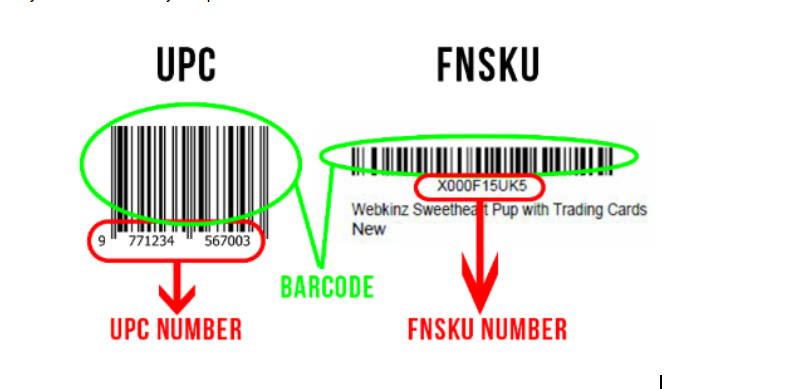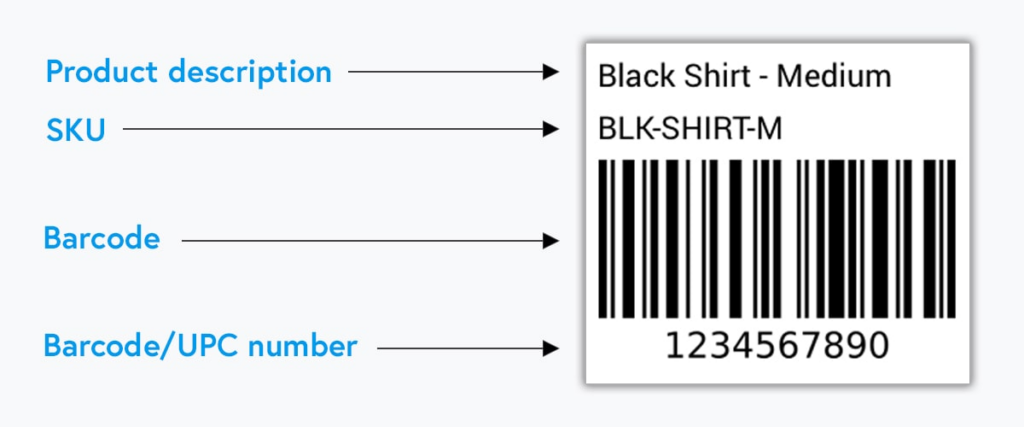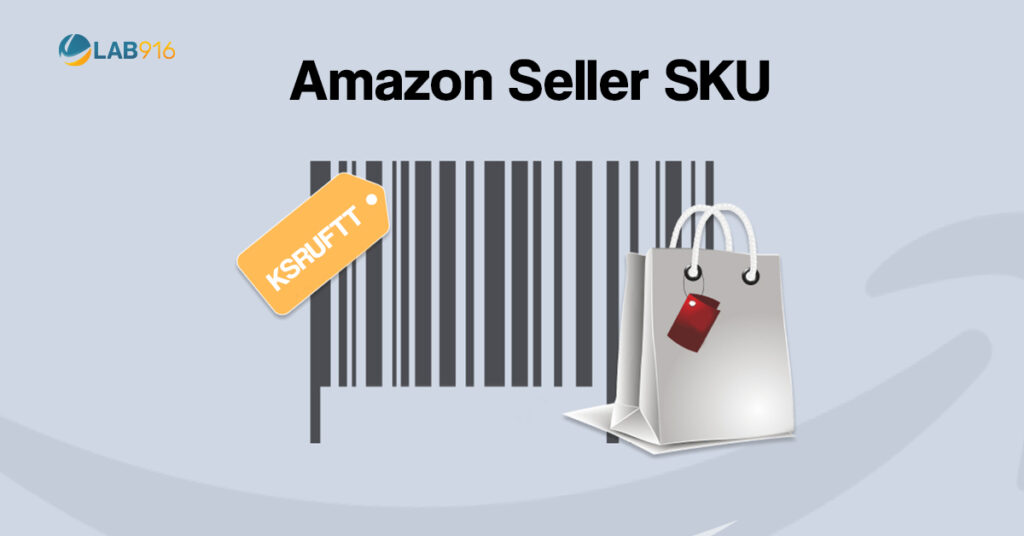Amazon Seller Central provides an all-inclusive solution for e-commerce and supply chain management. As a result, most small businesses choose to sell from this platform. But businesses that are new to the game are often confused with the numerous terminologies and jargon. One of them is Amazon Seller SKU.
One of the primary aspects of selling on Amazon Seller Central is creating SKU, often pronounced as “skew.” These product identifiers have multifaceted purposes and thus, can get quite confusing for new sellers. This blog covers all there is to know about SKUs to make it a little easier for you to understand, especially if you are new to selling on Amazon.
What is Seller SKU on Amazon?

SKUs are specific alpha-numeric codes that are issued to each of your products and their variations. These were created for managing inventory in warehouses. As long as the system is consistent and applied to all the products in your inventory, a SKU can be any combination of letters and digits that you choose. SKUs are utilized in traditional retail settings where they are scanned as barcodes and in e-commerce contexts where they are associated with a particular product in the database.
To describe various product details, you can divide the characters in a SKU using hyphens (dashes). The total number of characters in a SKU, including hyphens, should not exceed 40.
Additionally, Amazon doesn’t use a predefined template or methodology to establish SKUs. It is up to the sellers to create SKUs in whatever format they see fit. A SKU can range in length from the short AA-001 to the long ABC-001-R-M-0921-N. How much information (product details and qualities) you want to include in the SKU will determine how long it is.
Rules for Amazon Seller SKU

The fundamental SKU guidelines for Amazon sellers are listed here-
- Every item listed in your inventory file needs to have a special SKU, for example, YETI‘s red and blue bottles will have different SKUs.
- The present SKU cannot be changed by simply altering it in the inventory file. If you need to edit a product’s SKU, you must first delete its listing before adding it again with the updated inventory file.
- It will automatically overwrite and replace data for identical SKUs from earlier feeds with new data for those SKUs in a recently uploaded inventory file.
Why do you need Amazon Seller SKU?
Before learning how to construct these SKUs, it is essential to understand the varied purposes of the seller SKU and why you really need it.
Convenient Identification and Representation of Products

You can condense a lengthy description of your product into a long string of numbers and letters using an SKU. When your inventory comprises numerous products with numerous variations, these abbreviated identifiers are very useful. Instead of using lengthy product titles, it is more convenient to represent a product with a short, single code.
A Bed, Bath and Beyond White Lamp Shade Accessory 50mm Wide product, for instance, can be easily recognized and represented by the part number BBB-LSA-50W.
Easy Data Management

Your data will remain organized and readable by using SKU throughout all of the spreadsheets. SKUs are a godsend if you are utilizing an inventory management system to organize your supply chain. These software programs are designed to function better with inputs that are more condensed and code-like. It will be simpler for you to use codes like BBB-LSA-50W in your inventory management system as opposed to the complete product title using the aforementioned example.
Improves Communication with Vendors
You can communicate with suppliers and vendors more easily thanks to SKUs. Your correspondences might be quick and simple if you and your vendors have figured out the SKUs for your products. In each email, message, and invoice, you won’t need to include the full product name along with all of its features. Instead, leverage SKU to make your conversations succinct and time-effective.
Amazon Makes it Mandatory
There is a reason why using a seller SKU is required rather than merely an option. They help Amazon connect your goods with the appropriate product detail pages on its catalog. As a result, even if you don’t provide any of your listed items an SKU, Amazon will assign one at random so that the product and the product information match.
Difference between an Amazon Seller SKU, FNSKU, Barcode, UPC and ASIN

Products that are shipped through Fulfillment by Amazon, commonly known as Amazon FBA, are designated with an Amazon Fulfillment Network Stock Keeping Unit, or Amazon FNSKU. In order to guarantee that your product is linked back to your company throughout fulfillment, this special SKU is employed. This is a necessary step to ensure that you receive the income you are entitled to from sales on the platform because Amazon maintains so many products, including many that may be identical to yours.
Here is a complete guide to the shipping and packaging requirements for Amazon FBA- https://www.lab916.com/amazon-fba-packaging-and-shipping-requirements/
An FNSKU will be given to your product if you use Amazon FBA. Before sending the package to one of Amazon’s fulfillment centers, you must make sure that this number is placed on the mailing label.
On the other hand, the individual code created by Amazon to identify products listed on its many marketplaces is called an ASIN (Amazon Standard Identification Number). Multiple SKUs may exist for one ASIN (product variations). In addition, unlike SKU, ASIN is displayed for everyone to see on the listing page.
Global standard groups typically provide barcodes called Universal Product Codes (UPCs) to retail products. As a result, they consistently hold true for a particular product. SKU, on the other hand, is a unique alphanumeric code created primarily for internal inventory control.

FNSKU and ASIN are contained in the barcode that you obtain from Seller Central and apply to the appropriate products. Alternatively, GS1 provides barcodes (UPC, EAN). While SKU is referenced in product listings on the inventory management tab, it is essentially a code for internal communication and coordination that you provide to Amazon.
This is how you can convert Amazon ASIN to UPC- https://www.lab916.com/convert-amazon-asin-to-upc/
How to create Amazon Seller SKU
To generate SKUs, you don’t require any particular software or application. Additionally, no specialized knowledge is needed to create these seller-focused product identifiers. You can construct SKUs if you have sufficient knowledge of the provided product and a notebook.
Moreover, there is no set format to adhere to while creating SKUs. Any format that you find to be simple to memorize and utilize is acceptable as long as your SKU doesn’t exceed 40 characters.
We are here to provide you with a more comprehensive understanding of how you can develop your own SKUs to help you organize your products and inventory.
What should an Amazon Seller SKU include?
These are a few of the details that are usually included in SKUs for convenience.

Name of the product: The overall title of the item, such as “pants,” “toothpaste,” or “cell phone case.”
Category of the product: The general category that a product belongs to. For instance, clothing/apparel can include things like shirts, socks, and gloves.
Condition of the product: The product’s physical state, such as whether it’s brand-new, second-hand, or in an open box.
Supplier of the product: The retailer or company from which you obtained the merchandise.
Features of the product: Size, color, substance, and other distinguishing characteristics of the item.
Seasonality: The appeal of a product throughout certain times of the year, such as the summer, the winter, holidays etc.
Cost: The price you paid for the thing when you bought it.
Sequence or batch: The order in which the products are added to the inventory is known as the batch number or sequence.
However, you are not confined to using these product specifics alone. You can include a product attribute in the SKU if you believe it to be crucial for cost analysis, inventory management, or any other purpose.
Amazon-generated SKUs
While Amazon generated SKUs take away the hassle of creating your own SKUs, it presents you with a whole array of problems like-
- Amazon provides products with various SKUs if you sell the same items on two different Amazon shops. Therefore, a small blue pink skirt’s SKU on one store might be SK-28-VER-5, while it might be XZ-75-MTZ-06 on another. It thus becomes difficult to keep track of the number of units sold through various sources.
- SKUs created by Amazon will be useless to you and your team and difficult to remember, especially as your inventory increases. Long meaningless codes take away from the objective of SKUs, which is to provide a convenient way to search for products.
Customizing an Amazon Seller SKU

When generating SKUs, you can customize them as much as you like. We’ll discuss one of the several methods for developing an SKU here.
Begin with the Vendor
A product’s SKUs should begin with the supplier or source by giving them two- or three-character codes. For instance, you can use RA or AB, respectively, if you are purchasing goods from Royal Apparel or Alibaba.
You won’t need to consult your invoices to determine which product was sourced from which provider if you include the supplier or source at the beginning of the SKU. You can find that out from the list of SKUs.
Indicate the product’s name and category
To make things simple on Seller Central and elsewhere if you are selling across many product categories, you might wish to use a category identifier. If you sell both fiction and non-fiction books, for instance, you can distinguish between the two with designations like FB (Fiction Books) and Non-fiction (NF). You can use a double-character identifier once more for several genres like classics, modern classics, children’s classics, young adult, etc such as CL for classics, MC for modern classics, CC for children’s classics, YA for young adults, and so on.
The attributes and conditions should be added.
Mention the product’s size, material, color, and condition. Colors can be denoted with two letters, size with one, condition with another, and material with two letters. For example-
YL-L-N-SL would refer to a new yellow large silk item.
Mention the Price
Many retailers fail to include the product’s price in their SKUs. We believe that making the pricing clear there will enable you to quickly determine your profit margins and whether you should offer a discount on a product that has been on the shelf for a while. To specify the price, you can use three to four characters, such as 20D for 20 dollars.
Let’s say you come across an SKU produced using the technique we just covered.
AB-RU-BS-YL-SL-K-N-120D
It is a 23-character SKU and appears to be very detailed. Let’s break down all of the data using the strategy and order mentioned above.
The SKU provided suggests that Alibaba(AB) is the product’s source of supply. It is a silk(SL) bedsheet(BS) meant for everyday or regular use (RU). Additionally, the king-sized(K) yellow(YL) piece is brand-new(N) and cost the vendor $120 (120D).
As you can see, an SKU enables you to condense lengthy product descriptions into a 23-character alphanumeric string. If you believe that your needs don’t necessitate such a lengthy SKU, you can trim it to suit them.
If you still need help with creating your own SKUs, fellow Amazon sellers can always help you out. Reach out to them through the best Amazon Seller Forums.
Things to remember while creating Amazon Seller SKUs
- Establish a single SKU structure for all of your business’s items and categories. To guarantee that everyone on the team is on the same page, create an SKU creation handbook.
- Do not begin SKUs with 0. When utilized in data and management applications, it can cause problems.
- Use the same SKU across all Amazon marketplaces for a similar product variation.
- Just use alphabets and numbers for your SKU units. Don’t use symbols.
- Don’t add dates and other variables to SKUs. With the advent of a fresh batch, certain SKUs may become obsolete. Not only will you need to produce new SKUs, but you’ll also need to generate new listings for the same existing listing.
Conclusion
Your inventory management will be simplified with a sound SKU system. With carefully considered SKUs, browsing through the products on Seller Central will be more user-friendly. Similar to this, utilizing SKUs rather than product names and titles makes it easier to use data and management software and applications.


